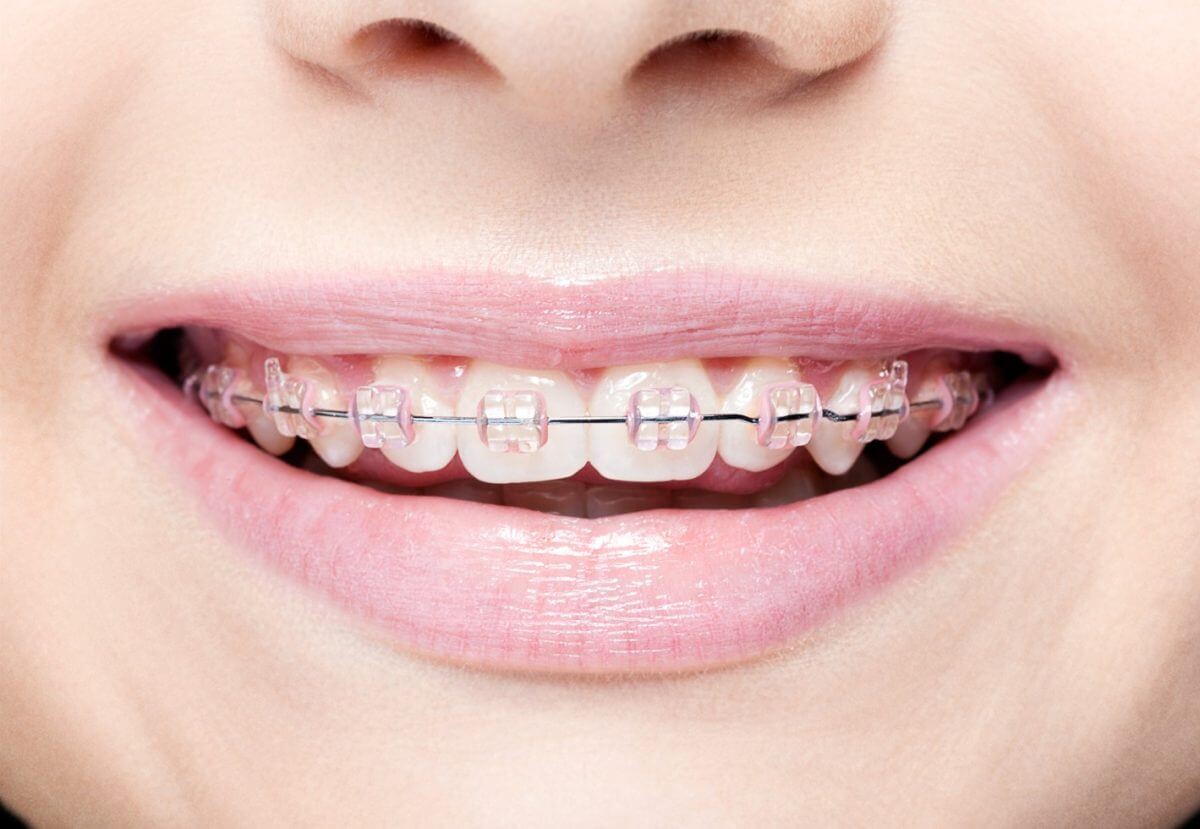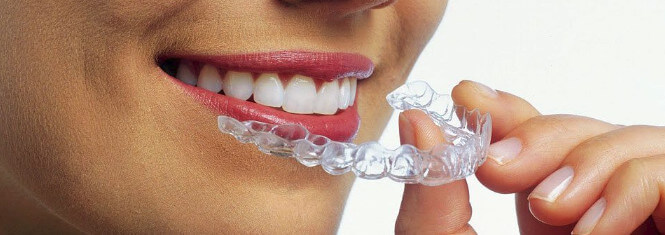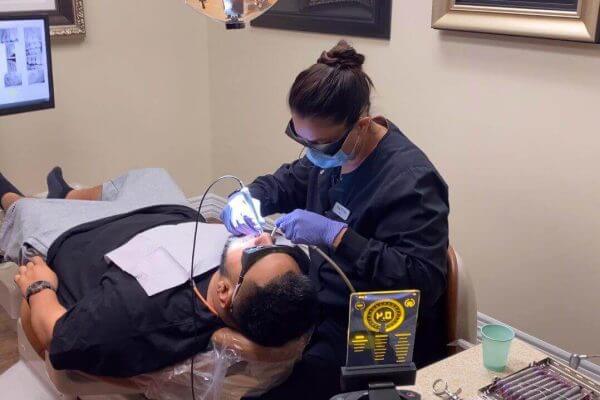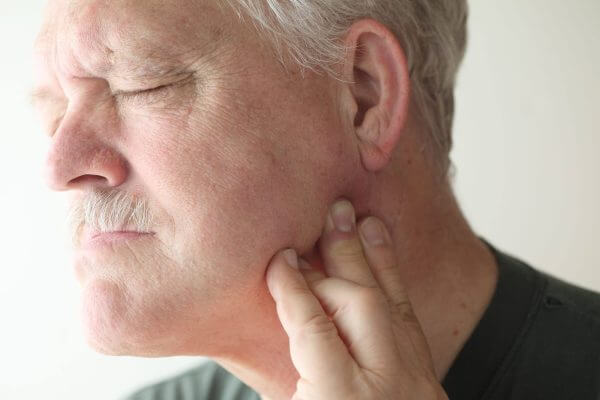Ensuring proper alignment of teeth is crucial for both aesthetic and functional aspects of oral health. One bite alignment that requires careful attention is the edge-to-edge bite, where the upper and lower front teeth meet directly without any overlap. This specific alignment can lead to various dental challenges that need expert intervention.
Lakefront Family Dentistry in Lake Elsinore, California, stands as a trusted resource for addressing such dental concerns. Under the leadership of Dr. Mark Phillipe and California native Dr. Derek Hauser, the beautiful private practice brings over 40 years of combined dental experience to their happy patients.
With a focus on the edge-to-edge bite, this article will outline its implications and the treatment options available, drawing on the expertise of Dr. Phillipe and Dr. Hauser.
The Basics of Bite Problems
Definition and Importance of Addressing Bite Issues
Bite problems, clinically known as malocclusions, refer to misalignments or incorrect relations between the upper and lower dental arches when the jaws are closed. Properly aligned teeth and jaws not only contribute to an aesthetically pleasing smile but also promote effective chewing, clear speech, and long-term oral health. Misaligned teeth can lead to uneven wear, increased risk of tooth breakage, jaw pain, and temporomandibular joint disorders (TMJ). Addressing bite issues is thus essential to prevent these complications and ensure overall oral well-being.

Introduction to the Edge-to-Edge Bite
The edge-to-edge bite is a specific type of malocclusion where the incisal edges of the upper front teeth align directly with those of the lower front teeth, resulting in no vertical overlap. Unlike the typical bite where upper teeth slightly overlap the lower teeth, the edge-to-edge configuration can pose unique challenges. These may include increased risk of tooth chipping or fracturing, difficulty in tearing food, and accelerated tooth wear. Direct edge-to-edge contact often results in heightened pressure on the teeth, which may lead to enamel wear over time.
Traditional Braces: A Tried-and-True Solution
Overview of Traditional Braces and How They Function
Traditional braces have long been the cornerstone of orthodontic treatment. They consist of brackets that are attached directly to each tooth’s surface and are interconnected using a wire. This wire is periodically adjusted to apply specific pressures on the teeth, guiding them to their desired positions. Over time, these constant and controlled forces move the teeth, correcting bite problems and achieving optimal alignment.
Elastics or bands might be used in conjunction with braces, depending on the specific alignment problem being addressed. These additional components can help in exerting more force or guiding the movement of teeth in a particular direction.
Self-Ligating Braces Offer More Advanced Orthodontic Technology
Newer orthodontic technology now offers self-ligating braces. Traditional braces and self-ligating braces both aim to correct dental misalignments, but they function differently.
Traditional braces utilize elastic bands or ties to hold the orthodontic wire in place on the bracket, requiring regular adjustments.
On the other hand, self-ligating braces are designed with a built-in mechanism, often a clip or sliding door, to hold the wire. This design reduces the amount of friction on the wire, which may lead to potentially faster and more comfortable treatments. Additionally, self-ligating braces typically require fewer appointments for adjustments compared to their traditional counterparts.

Types of Bite Problems Best Addressed by Traditional Braces and Self-Ligating Braces
While the range of orthodontic issues that braces can tackle is vast, they particularly excel in addressing:
1. Severe Overbite or Underbite: Traditional braces provide the force needed to reposition the jaws relative to one another.
2. Deep Bite: Where the upper front teeth significantly overlap the lower front ones.
3. Crossbite: Especially in cases where several teeth or the entire dental arch is misaligned.
4. Severe Crowding: Braces can systematically create space and reposition teeth that are tightly packed together.
5. Rotations and Malposition’s: Individual teeth that are twisted or positioned incorrectly can be precisely targeted with braces.
Traditional and self-ligating braces are also effective for the edge-to-edge bite, guiding the upper or lower teeth (or both) to achieve a more standard overlap, thus reducing the risks associated with this malocclusion.

Advantages of Using Braces for Complex Cases
1. Precision: Braces offer a high level of accuracy in tooth movement, especially for teeth that are severely misaligned.
2. Versatility: With their ability to address multiple bite issues simultaneously, they can handle a broad spectrum of malocclusions.
3. Durability: Made primarily of metal, traditional braces can withstand significant forces, making them ideal for severe orthodontic cases.
4. Predictability: Given their long history of use, the outcomes with traditional braces are well-established and predictable.
5. Integrated Treatment: Braces can be combined with other orthodontic appliances like palate expanders or headgear to address skeletal discrepancies and achieve comprehensive results.
While innovations in orthodontics have introduced alternatives to traditional braces, their efficacy in addressing complex bite problems remains unparalleled. Their adaptability and effectiveness make them a top choice for many dentists, including seasoned professionals like Dr. Mark Phillipe and Dr. Derek Hauser at Lakefront Family Dentistry.
Invisalign: The Modern Alternative
Invisalign and Its Revolutionary Design
Invisalign has emerged as a groundbreaking alternative to traditional orthodontic treatments. Contrary to the fixed nature of braces, Invisalign utilizes a series of clear, removable aligners tailored to the individual’s teeth. These aligners are crafted using cutting-edge 3D imaging technology, ensuring a precise fit and effective movement trajectory.
Each set of aligners is worn for about one to two weeks, gradually shifting the teeth into their desired positions. Patients progress through the series of aligners, with each set making incremental adjustments to the alignment of their teeth.

Invisalign Clear Aligners
Bite Problems that Invisalign Can Typically Treat
While Invisalign’s technology continues to evolve, making it suitable for a wider range of malocclusions, it’s most effective for:
1. Mild to Moderate Overbite and Underbite: Adjusting the relation between upper and lower front teeth.
2. Gapped Teeth: Efficiently closing spaces and gaps between teeth.
3. Mild Crowding: Providing room and aligning teeth that are slightly overlapped or misaligned.
4. Open Bite: Adjusting the vertical positioning of teeth to ensure they meet properly.
5. Edge-to-Edge Bite: In some cases, Invisalign can be employed to slightly adjust the position of the front teeth, achieving a better overlap.
However, it’s important to note that the effectiveness of Invisalign in treating edge-to-edge bites or other severe malocclusions depends on the specifics of the case and requires a detailed evaluation by experienced dentists like Dr. Hauser and Dr. Phillipe.
Benefits of Invisalign Including Aesthetics and Comfort
1. Aesthetic Appeal: The clear nature of Invisalign aligners offers a virtually invisible treatment option, ideal for adults and teens who might be self-conscious about traditional metal braces.
2. Comfort: Without the brackets and wires associated with traditional braces, Invisalign aligners reduce the chances of oral sores or discomfort.
3. Flexibility: Being removable, they allow for better oral hygiene practices and unrestricted dietary choices.
4. Predictable Outcomes: The use of advanced imaging technology ensures patients can visualize the expected results even before starting the treatment.
5. Reduced Office Visits: Given the sequential nature of the treatment, patients often require fewer check-ups, making the process more convenient.
In the rapidly evolving landscape of orthodontics, Invisalign represents a harmonious blend of aesthetics and functionality. While they might not replace traditional and self-ligating braces in all scenarios, their advantages make them a compelling choice for many seeking effective yet discreet orthodontic treatment.
Comparing Invisalign and Braces
Direct Comparison Between the Two Treatments
1. Versatility:
– Braces: Traditional and self-ligating braces excel in treating a wide range of malocclusions, including severe cases like pronounced overbites, underbites, and crossbites. They can address multiple issues simultaneously and are often preferred for complex orthodontic problems.
– Invisalign: While Invisalign has made impressive strides in the range of issues it can address, it is typically more effective for mild to moderate malocclusions. Severe cases might still require the precision and force that traditional braces offer.
2. Aesthetics:
– Braces: Traditional and self-ligating metal braces are noticeable, and while there are ceramic and clear options available, they still involve visible brackets and wires.
– Invisalign: One of Invisalign’s primary advantages is its near-invisibility, making it a favored option for those looking for discreet treatment.
3. Treatment Time:
– Braces: The treatment duration with braces can vary based on the severity of the issue but tends to range from 18 months to 3 years. Adjustments are typically required every 4-6 weeks.
– Invisalign: Treatment times with Invisalign might be shorter for some cases, often ranging from 12 to 18 months. However, this can vary based on patient compliance and the complexity of the issue.
4. Patient Compliance:
– Braces: Being fixed, there’s no reliance on the patient to keep them in place. This ensures consistent pressure and movement.
– Invisalign: Since the aligners are removable, treatment success heavily relies on patient discipline. They need to be worn for at least 20-22 hours a day for optimal results.
Expert Opinions from Dr. Phillipe and Dr. Hauser
With over four decades of collective experience, Dr. Mark Phillipe and Dr. Derek Hauser have witnessed the orthodontic field’s evolution firsthand. While both acknowledge the revolutionary nature of Invisalign, their approach is always rooted in the best interests of the patient.
Dr. Phillipe notes, “The choice between Invisalign and braces often hinges on the specific alignment issues at hand. While Invisalign’s discreet nature is commendable, traditional braces provide unmatched precision in certain cases.“
Echoing this sentiment, Dr. Hauser adds, “It’s crucial for patients to understand that there’s no one-size-fits-all in orthodontics. Each mouth is unique, and while Invisalign offers remarkable advantages, it’s our duty to recommend the most effective solution tailored to the individual’s needs.“
Both experts stress the importance of a thorough dental consultation and evaluation before making a treatment decision, ensuring the chosen method aligns with the patient’s dental needs and lifestyle considerations.
Addressing bite problems is not merely a pursuit of aesthetic perfection; it’s a crucial step towards ensuring long-term oral health and functionality. Bite misalignments can lead to a cascade of dental challenges, from uneven wear to jaw discomfort.
As we’ve explored, both traditional and self-ligating braces as well as Invisalign offer distinct advantages in addressing these issues, with the best choice varying based on individual needs.
Lakefront Family Dentistry, under the seasoned guidance of Dr. Mark Phillipe and Dr. Derek Hauser, is dedicated to offering tailored solutions that prioritize the health, comfort, and preferences of their patients.
Most Referred Dentists in the Inland Empire
Don’t let bite problems cast a shadow on your beautiful smile or compromise your oral health. Every journey towards a perfect smile begins with a single, educated step. We invite you to take that step with us.
Schedule a consultation with Dr. Phillipe and Dr. Hauser at Lakefront Family Dentistry today. Let our expertise guide you to the best orthodontic solution tailored just for you.
Lakefront Family Dentistry in Lake Elsinore
Address: 31571 Canyon Estates Dr #117 Lake Elsinore CA 92532
Phone: (951) 244-9495
Office Hours
MON 7:00 a.m. – 6:00 p.m.
TUE 7:00 a.m. – 6:00 p.m.
WED 8:00 a.m. – 5:00 p.m.
THU 7:00 a.m. – 6:00 p.m.
FRI 7:00 a.m. – 1:00 p.m.
SAT CLOSED
SUN CLOSED






